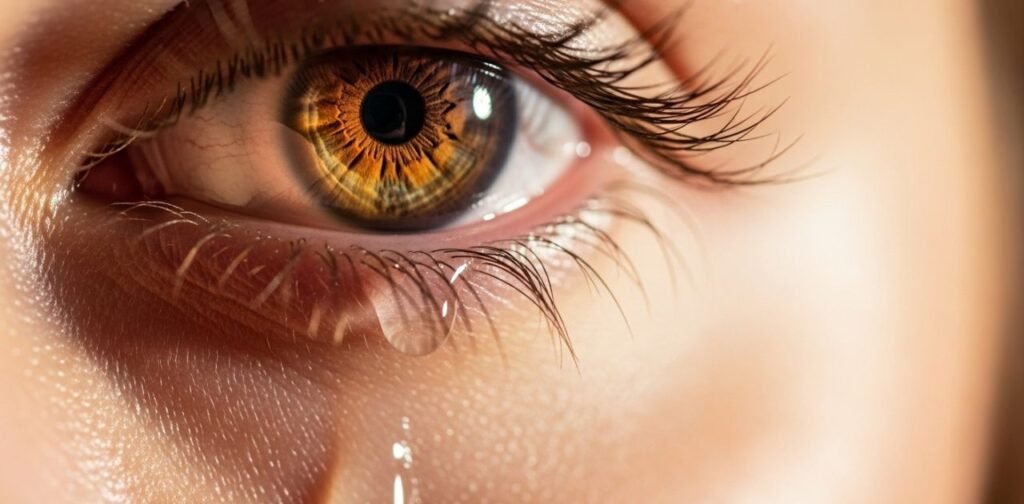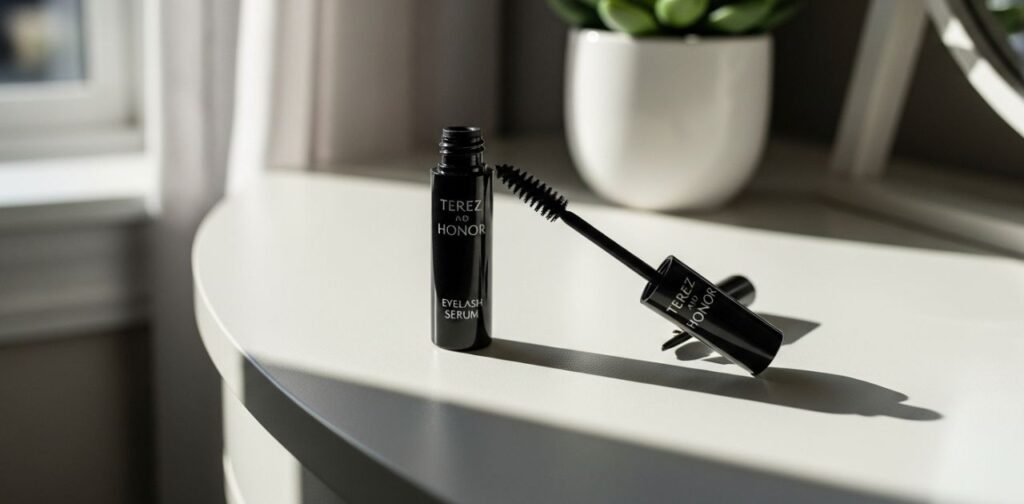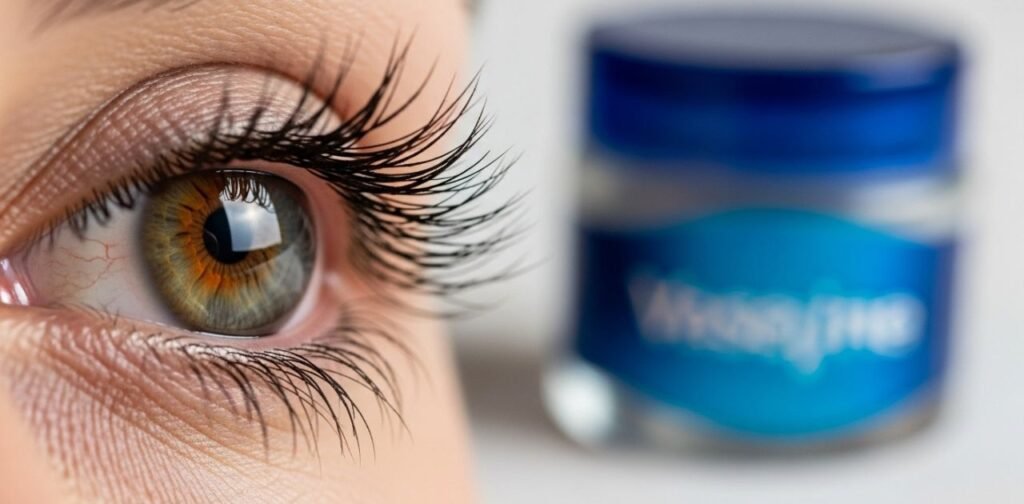Have you ever heard that tears can do more than just express your emotions? Some believe that a good cry might actually lead to longer, luscious eyelashes. It’s a tempting thought—imagine transforming those watery moments into beauty benefits. But is there any truth behind this alluring myth? Let’s dive into the fascinating world of eyelash growth and explore whether shedding tears really gives us those coveted long lashes or if it’s just another tale spun in the realm of beauty lore. Get ready to uncover some eye-opening facts!
The Myth of Crying for Longer Eyelashes
The idea that crying can enhance eyelash length has been around for ages. It’s a concept often whispered among friends, passed down like an old wives’ tale. Many have romanticized this notion, believing that tears somehow nourish or stimulate hair growth.
In reality, there’s no scientific backing to support this claim. Tears mainly consist of water and proteins but lack the essential nutrients needed for hair development. While crying does have emotional benefits, it doesn’t magically translate into longer lashes.
People may notice their eyelashes looking slightly more pronounced after a good cry due to moisture making them appear darker or fuller temporarily. However, that’s just an optical illusion rather than actual growth. It seems our longing for quick beauty fixes sometimes leads us down misleading paths filled with myths and misconceptions about what truly fosters lash health and lengthening.
The Science Behind Eyelash Growth
Eyelash growth is a fascinating biological process that takes place in cycles. Each lash has its own life span, typically lasting about 30 to 45 days before falling out.
During the anagen phase, lashes are actively growing. This stage can last several weeks or even months, depending on individual genetics and health.
Following this is the catagen phase, a transitional period where growth halts. Here, eyelashes prepare to shed as they enter the telogen phase. In this resting stage, lashes remain intact for some time until they naturally fall away.
Hormones play a significant role too. Fluctuations during pregnancy or menstrual cycles can influence eyelash density and length.
Nutrition also impacts lash health. Vitamins such as biotin and minerals like zinc contribute to stronger hair follicles.
Understanding these processes helps demystify why our eyelashes behave differently at various times in our lives.
Factors That Affect Eyelash Length
Eyelash length can be influenced by several factors. Genetics plays a significant role. If your parents had long lashes, you might be lucky enough to inherit that trait.
Hormones also impact eyelash growth. Fluctuations during pregnancy or menopause can change the way your lashes grow and shed.
Age is another critical factor. As we get older, our hair follicles—including those for eyelashes—may slow down in production, leading to thinner lashes.
Nutrition shouldn’t be overlooked either. A diet rich in vitamins and minerals supports healthy hair growth. Biotin, vitamins E and B12 are particularly beneficial for luscious lashes.
Health conditions such as thyroid disorders can affect lash density and length too. Keeping an eye on overall wellness contributes to vibrant eyelashes as well as general beauty practices.
Other Ways to Promote Longer Lashes
For those seeking longer lashes, there are several effective methods to consider. Serums specifically designed for lash growth can be a game-changer. These products often contain nourishing ingredients like peptides and vitamins that stimulate hair follicles.
Natural oils also play a role in promoting lash health. Castor oil, for instance, is rich in fatty acids and has been praised for its potential to strengthen and moisturize lashes. A simple nightly application could yield positive results.
Additionally, maintaining a balanced diet contributes significantly to overall hair health, including your eyelashes. Foods high in biotin, such as eggs and nuts, support keratin production—an essential protein found in both hair and nails.
Practicing good eye hygiene prevents breakage from dirt or makeup residue accumulating on the lashes. Gentle cleansing ensures your lashes remain healthy while encouraging their natural growth cycle.
The Importance of Taking Care of Your Natural Lashes
Your natural lashes deserve attention, just like any other part of your beauty routine. Taking care of them ensures they remain healthy and strong.
Gentle cleansing is essential. Use a mild cleanser to remove makeup without causing damage. Rubbing or tugging can lead to lash breakage.
Moisturizing is another key aspect. Just as you hydrate your skin, consider applying castor oil or vitamin E to nourish your lashes. These ingredients may help promote growth and strength.
Don’t forget the importance of a balanced diet filled with vitamins and minerals that support hair health. Foods rich in biotin, for instance, can make a difference over time.
Avoid excessive use of mascara or heated curlers; both can weaken your lashes if used frequently. Embrace their natural beauty while providing them with the best care possible each day.
Also Read Our Latest Post:
Ready Set Discover Set by Image Skincare – Where to Buy in the Netherlands
Debunking Other Beauty Myths
Beauty myths are everywhere, often perpetuated by social media and word of mouth. One popular belief is that using more products leads to better results. In reality, fewer high-quality items can be more effective.
Another common misconception is that you must exfoliate daily for glowing skin. Over-exfoliation can strip the skin of its natural oils, leading to irritation instead of radiance.
Many people think drinking excessive water will eliminate all skin problems. Hydration is key, but it’s not a cure-all. Skin health also depends on diet and lifestyle choices.
Then there’s the myth about makeup causing acne. While certain ingredients may irritate sensitive skin, many modern formulations are non-comedogenic and safe for most users.
These myths continue to influence how we approach beauty routines. It’s vital to research and understand what truly works for our unique needs instead of blindly following trends or hearsay.
Conclusion
When it comes to beauty myths, the idea that crying can make your eyelashes longer is one of the more charming yet unfounded tales. While tears may temporarily enhance moisture and shine, they don’t contribute to lash growth in any meaningful way.
Understanding how eyelash growth works reveals a more complex process influenced by genetics, health, and care practices. Factors such as age and hormonal changes also play significant roles in determining lash length.
For those seeking longer lashes, there are effective alternatives available. Serums formulated with nourishing ingredients can promote healthier hair growth over time. Additionally, maintaining a balanced diet rich in vitamins will support overall hair health.
Caring for your natural lashes should be a priority too. Gentle cleansing routines and avoiding harsh makeup removers will help keep them strong and vibrant.
As we navigate through various beauty claims, it’s essential to differentiate between fact and fiction. Many popular beliefs about beauty lack scientific backing but continue to circulate due to their allure or simplicity.
Embracing your natural features while responsibly caring for them is what truly enhances beauty. The journey toward lush eyelashes doesn’t require tears; instead, it demands understanding and proper treatment for optimal results.



